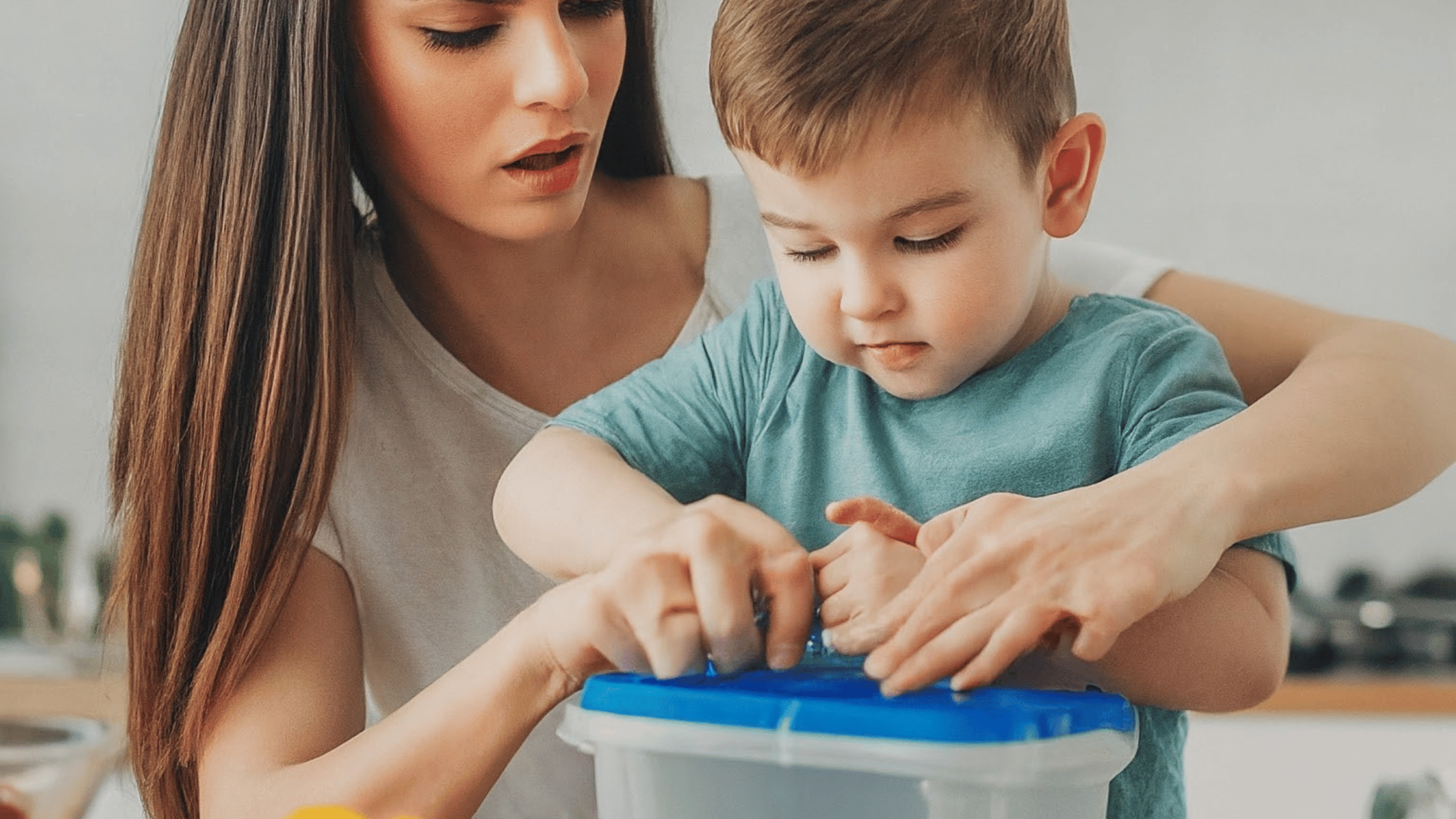Opening and Closing containers is a classic Montessori practical life activity for primary level children (3-6 years old). This activity not only helps them understand ways to open and close containers of a variety of shapes, sizes, and types, but also very easy to set up at home.
At the age of 2 years, kids begin to develop their hands and grasp. You must have seen your children exhibiting a keen curiosity for containers and witnessed them opening and closing cleaning supplies, dishwashing soap or food containers throughout their classroom day.
What are Open and Close Activities?
As the name suggests, Open and Close activities are the activities that involve opening and closing of something such as doors, wardrobes, containers, bottles, dresses, and many more. This helps in developing dexterity in fingers and hands and understanding how containers can be open/closed. Opening/closing activities also helps children develop vital life skills such as fine motor development, problem-solving skills, cause-effect relationships and receptive/expressive language development.
Maria Montessori believed that “Children have an absorbent mind”. It means they have the power to see, understand and learn. Therefore, there is a need to instruct in the right way and to allow them to explore and learn by doing.
In this lesson, we will learn the importance of open and close activity, materials required and how to present it in the right way. So, shall we start?
Why are Opening and Closing Containers Activity Important for Children?
Different containers have different ways to open such as spinning the lid, or pulling it with its opener. Due to this reason, closing and opening containers becomes a great activity for kids. , and we often observe children engaging in this activity in our observations. This is a great way to help them learn.
- It promotes cause-effect relationships.
- It improves hand grip.
- The development of problem-solving abilities, as certain boxes can be quite difficult to close, particularly boxes that have flaps.
- Improves concentration and memory as they become accustomed to recognizing various sizes of lids, and the lid that fits in the best in which box. This improves IQ.
- Strengthening hand-finger muscles and agility by encouraging hand-eye coordination.
- It increases independence and decreases dependence on parents to do the chores of a household.
- Improve hand eye coordination, fine motor skill concentration, and discrimination of visual.
Amazing isn’t it? So, next time, when you see your child opening a drawer or opening a container and playing with it, don’t get angry. Instead, provide them the opportunity to explore more.
Material Required to Perform the Open and Close Containers Activity:
Home is the ideal location to locate the containers required for this project.
- Six to four containers of different dimensions and styles with matching lids
- A tray or basket to store the containers
Note:
Check that the containers you have selected:
- Are clean, safe and operating in a safe and efficient manner
- Different closures are available based on the child’s development stage
- Select containers that are simple for children to hold.
Control of error
Each lid will fit to one base only
Prerequisites for open and close activity
- Children must be introduced with dressing frames
- Children should have introduced with
List of Containers Easily Available at Home
Here is a List of Containers that are available at your home.
- Tins
- Snap lock containers
- spice jars
- Cosmetic Jars of cosmetic
- containers with lids that flip open
- decorative jars
- wooden boxes
- pencil boxes
- Lunch boxes for lunch
- water bottles
How is the Opening and Closing Boxes Activity Presented?
The game is typically conducted by placing three or four boxes placed on an unfinished tray.
- Invite the child to the table along with the container tray and tell them, today, we will learn how to close and open the lids of these containers.
- Set all the containers on your table the order of their size in ascending order, with the biggest on the left side and the small one to the left.
- To open the containers, keep the container on its base using one hand, and then loosen its lid using your fingers on the other hand. Place the lid gently on the front of the container.
- Take off the lid from the box on the left. Move along each box until you reach the final box, which will be opened on the left.
- All containers are open now. Let the child practise opening the containers. Encourage them to try again if they fail to open.
- Once the child excels in opening them, introduce them to how to close the containers.
- To close the containers, place the lids back on the 1st container and tighten the lid.
- Continue replacing the lids from left to right. Each time, keep the container by its bottom and then use your other fingertips to place the lid.
- Once all the containers are all closed, ask the child to repeat the activity independently.
Variations of Open and Close Activity
- Sorting: Include containers of different shapes, sizes, and colors. After opening and closing, have the child sort them based on these attributes.
- Matching: Use pairs of identical containers. The child can open them all, then practice matching each container with its corresponding lid.
- Treasure Hunt: Place small objects inside some containers. The child opens them to “discover” the treasures, then closes them again.
Tips to Remember:
- Focus on the process, not the product: The joy of exploration and learning is more important than completing the activity quickly.
- Offer opportunities for independent practice: Let the child work at their own pace and allow them to repeat the activity as many times as they like.
- Maintain a calm and positive environment: Montessori activities thrive on encouragement and respect for the child’s natural desire to learn.
Try this fun activity at home and let the child improve their explorational, fine motor, spatial skills.

